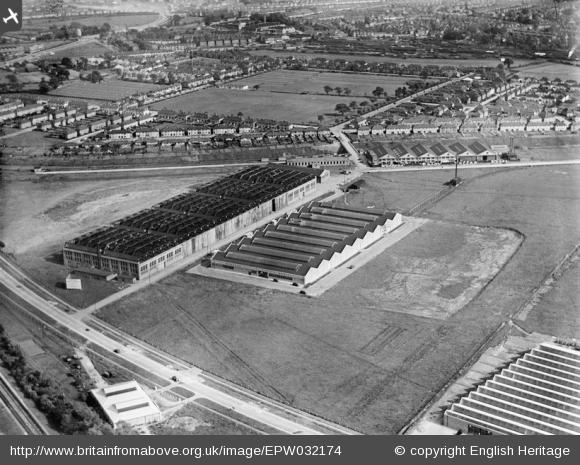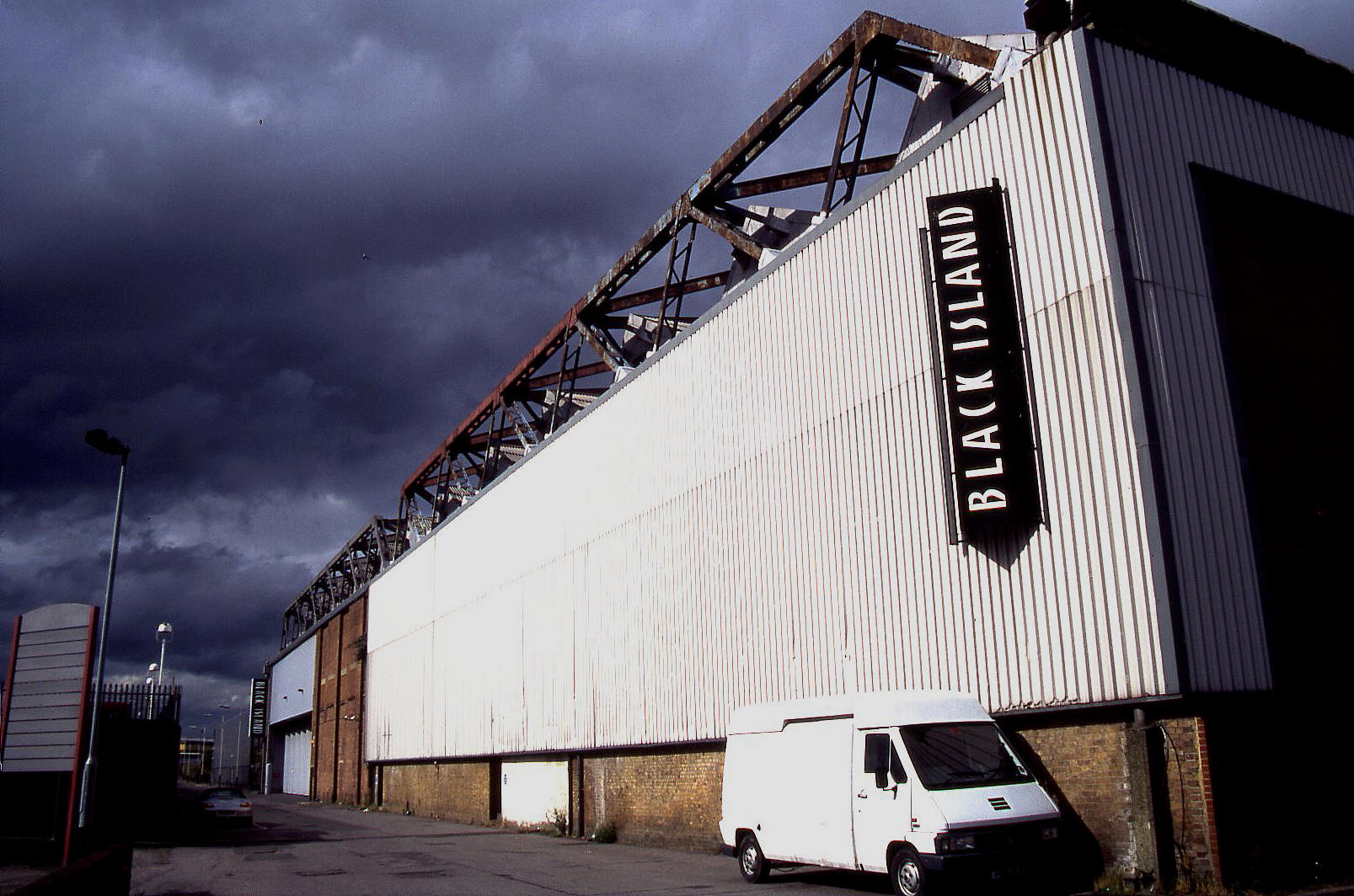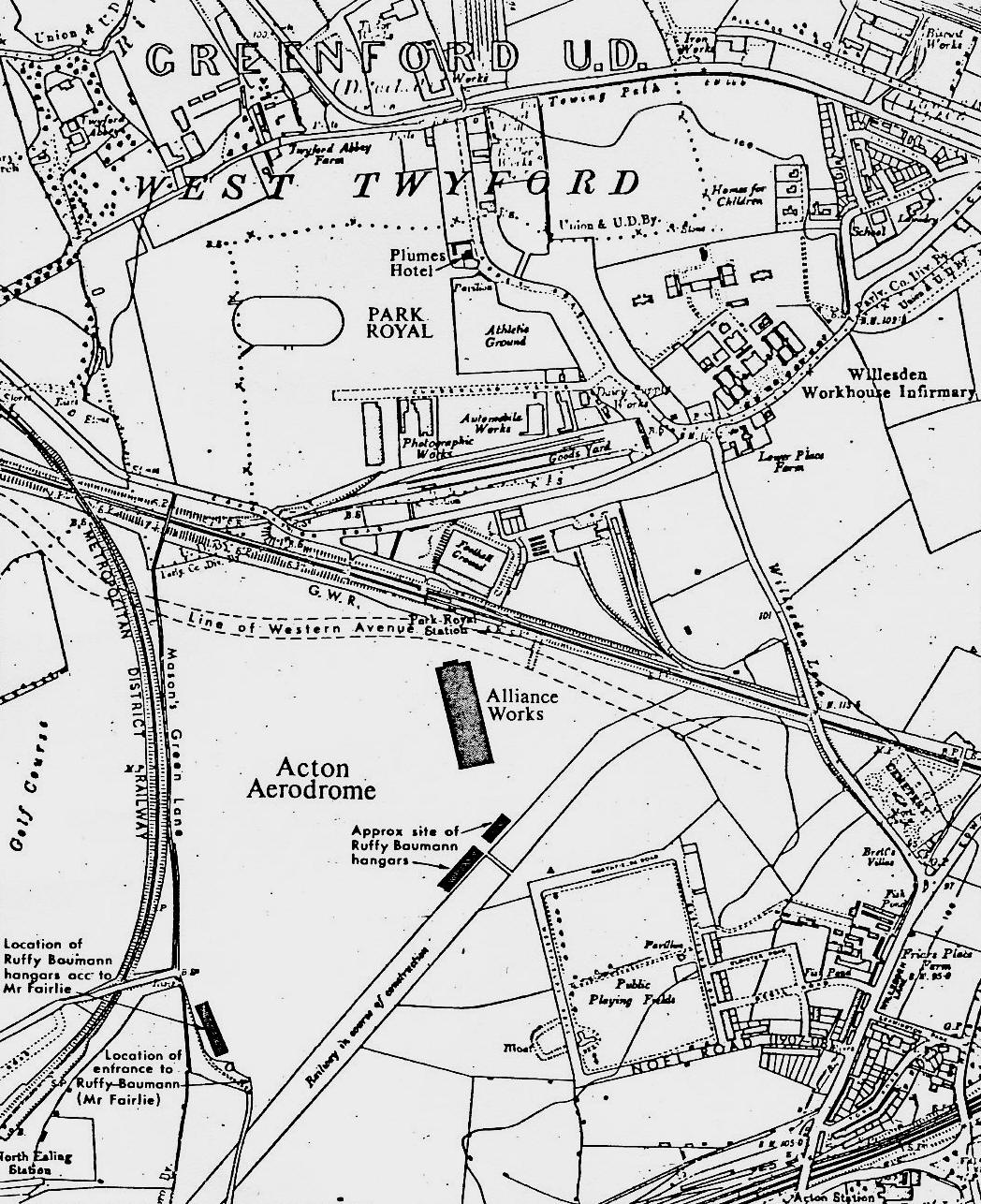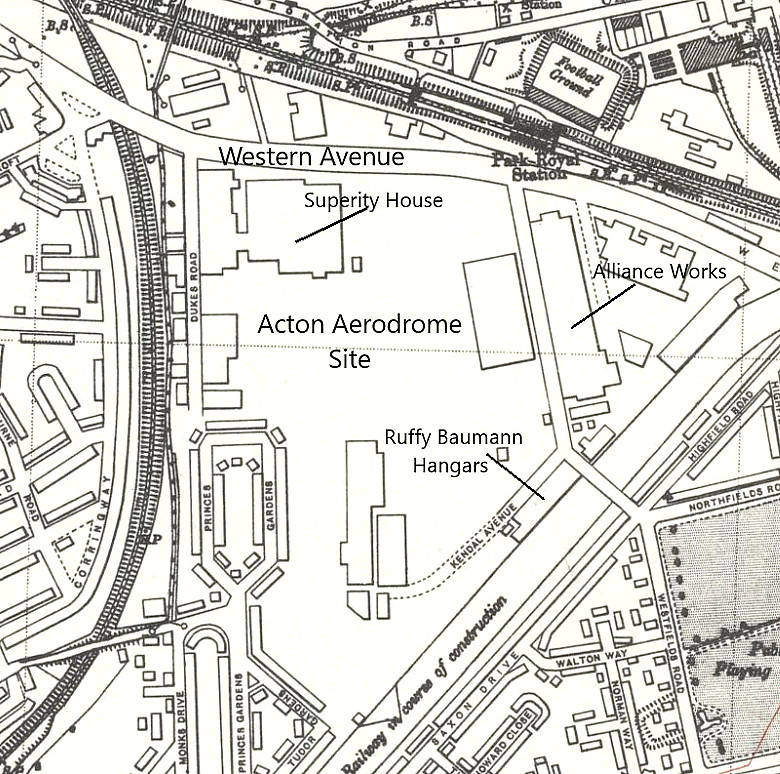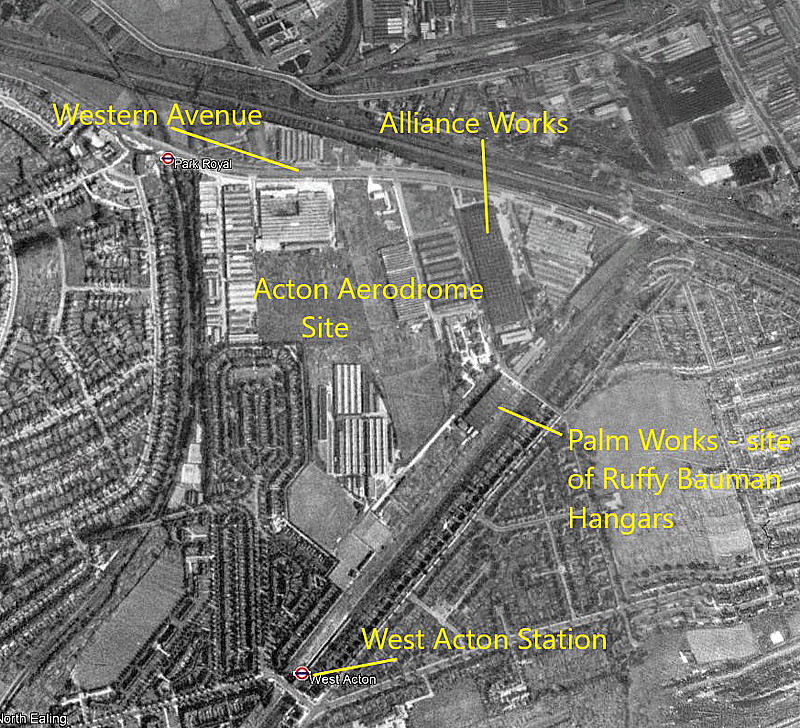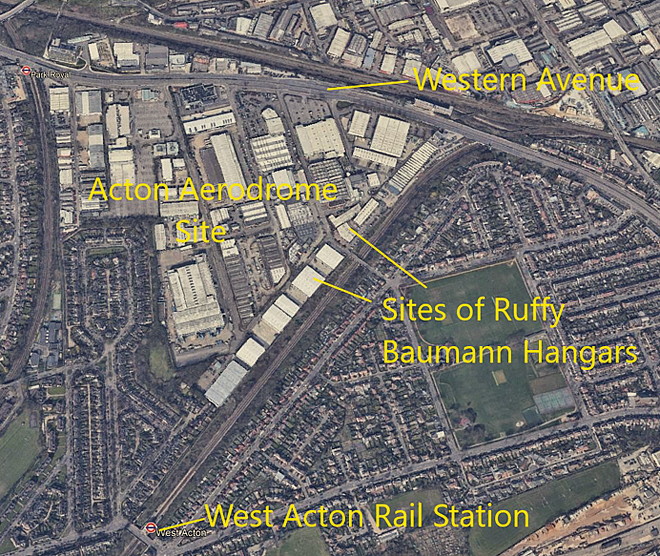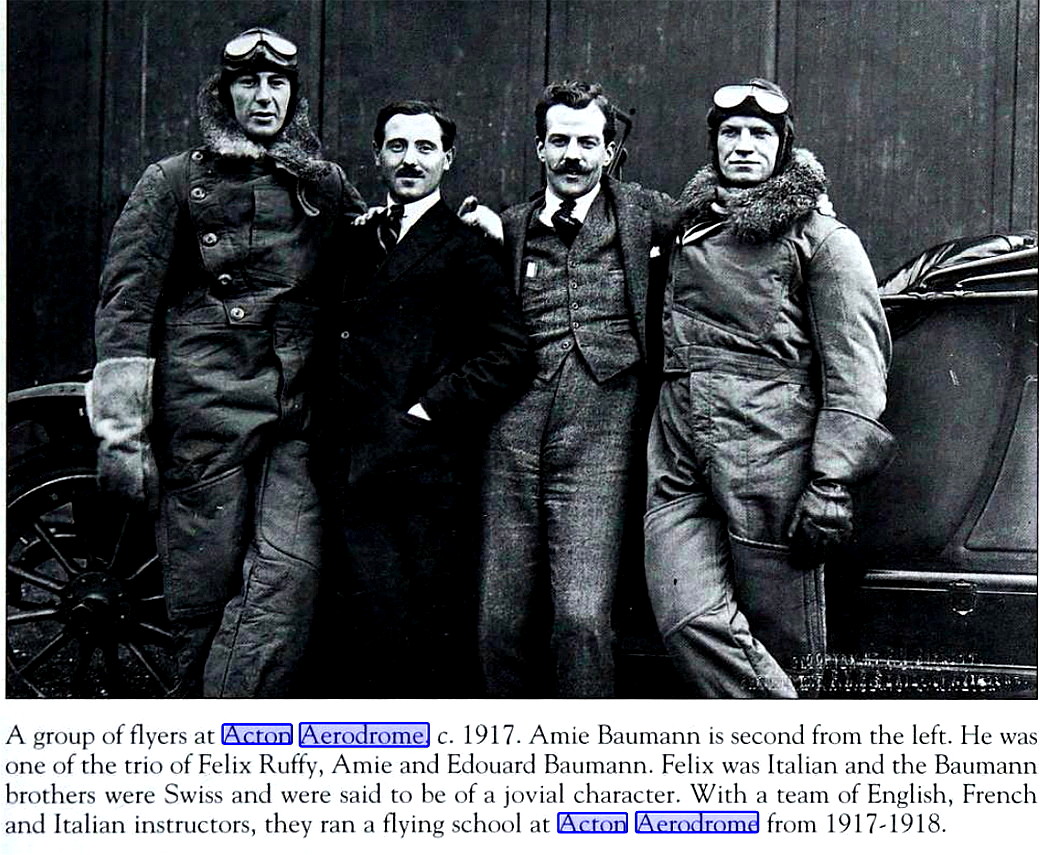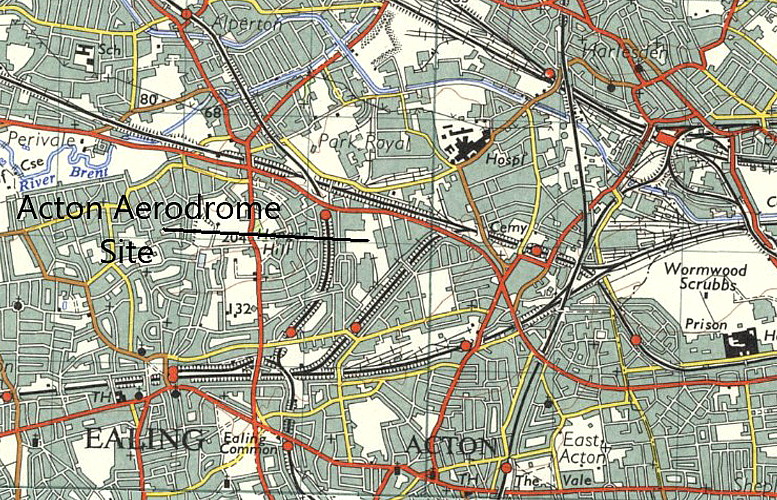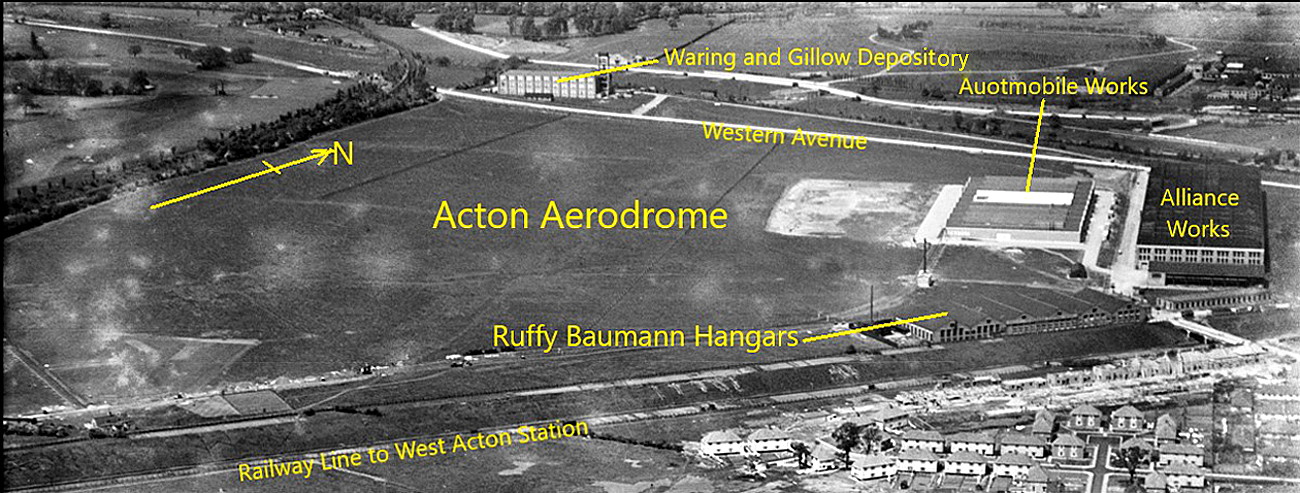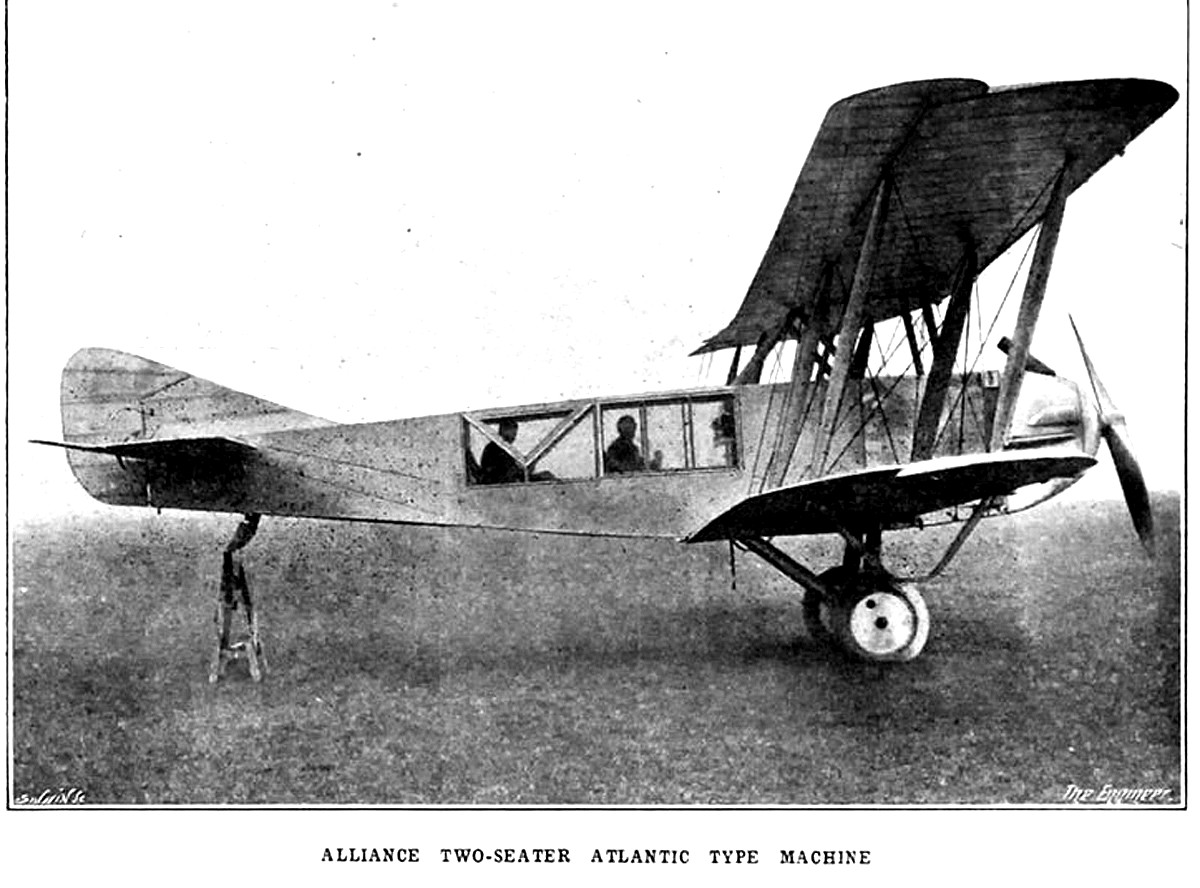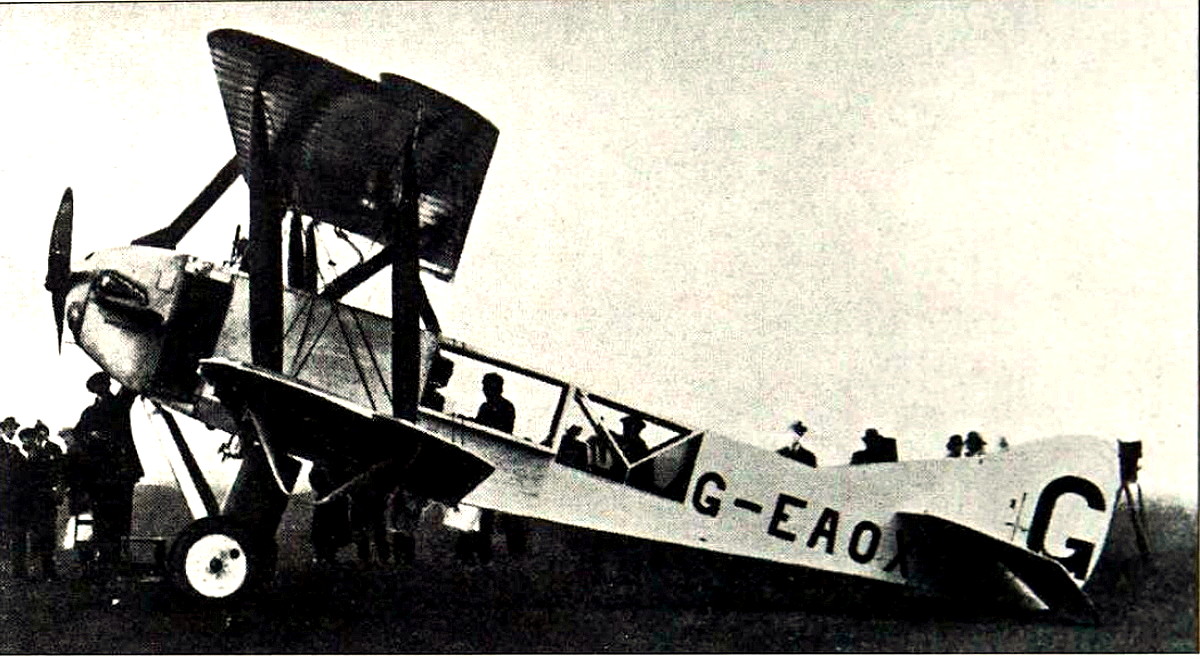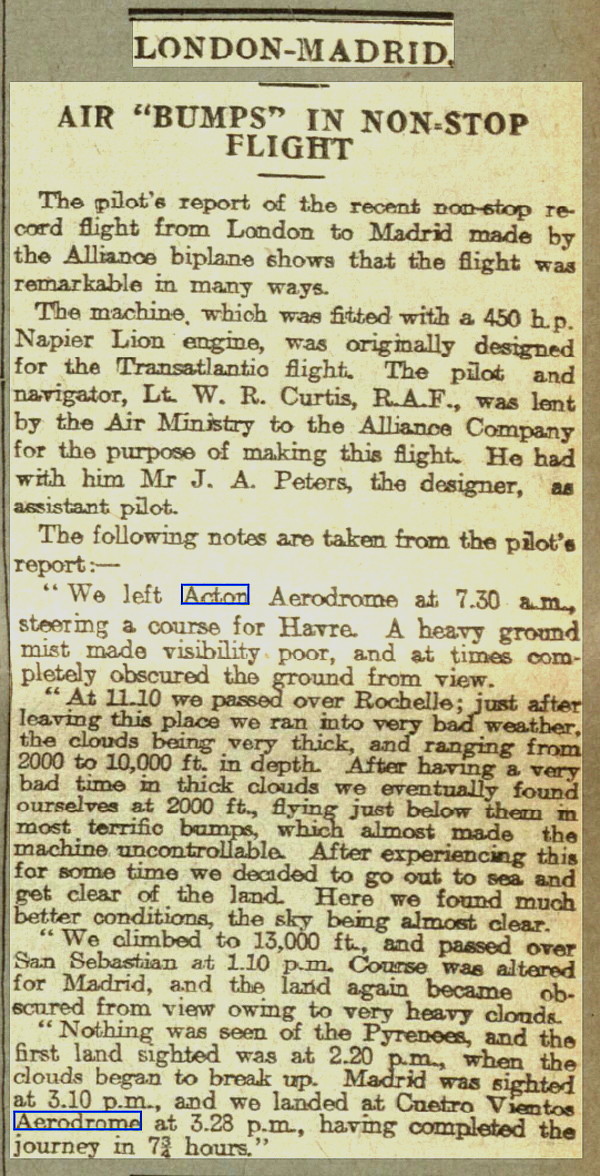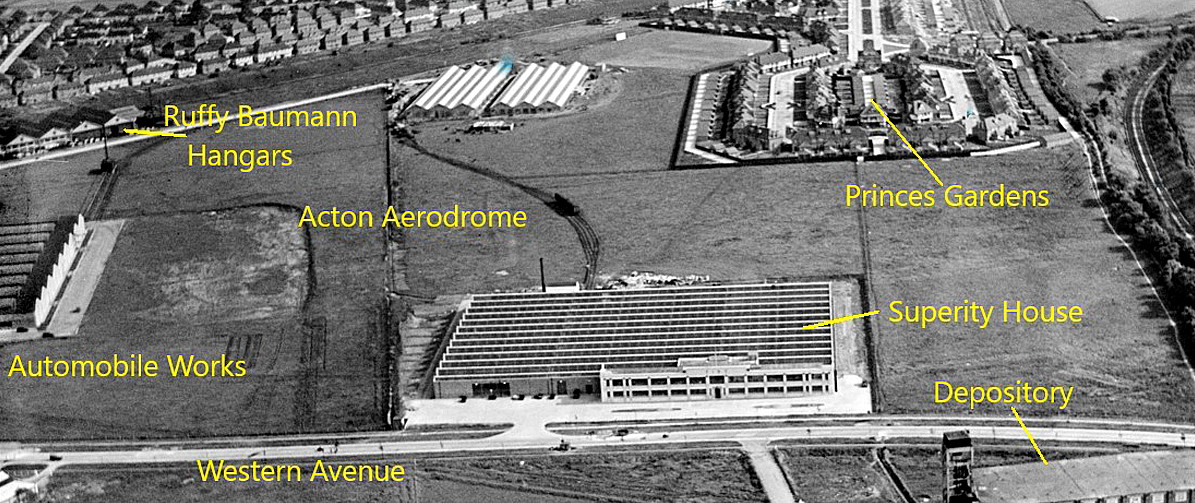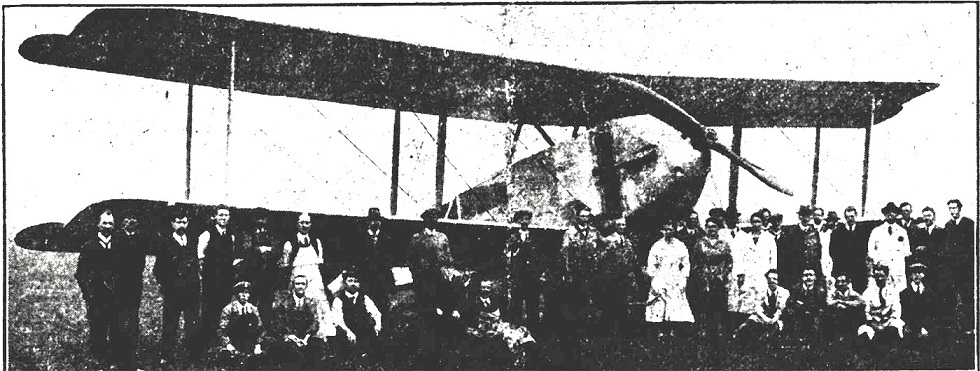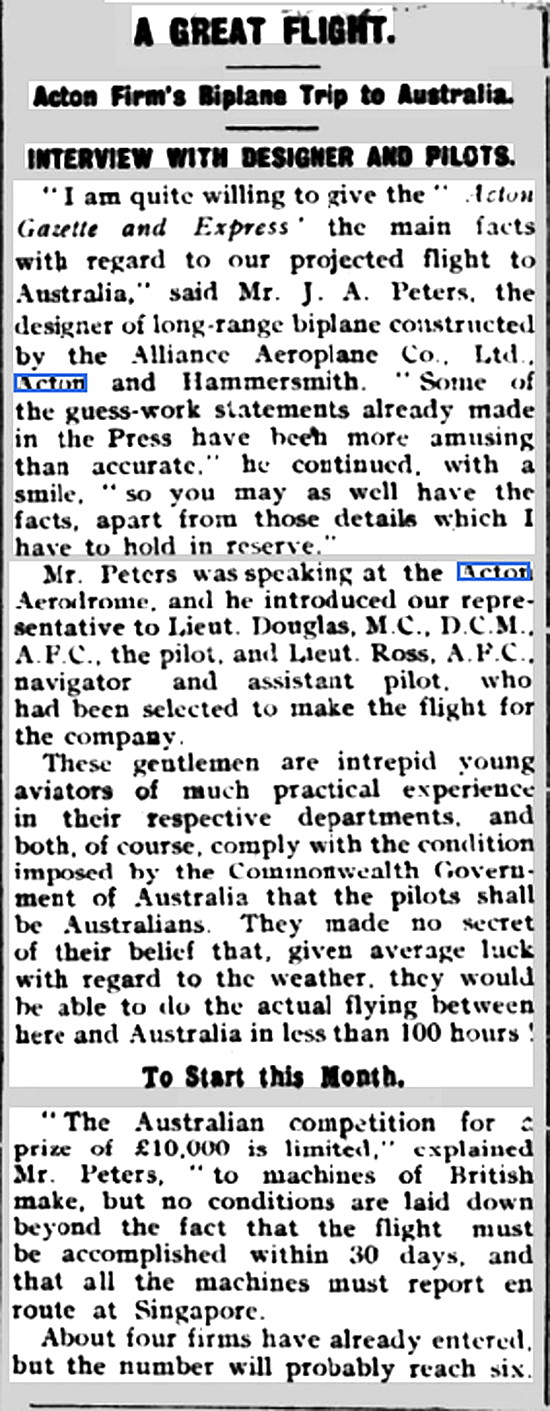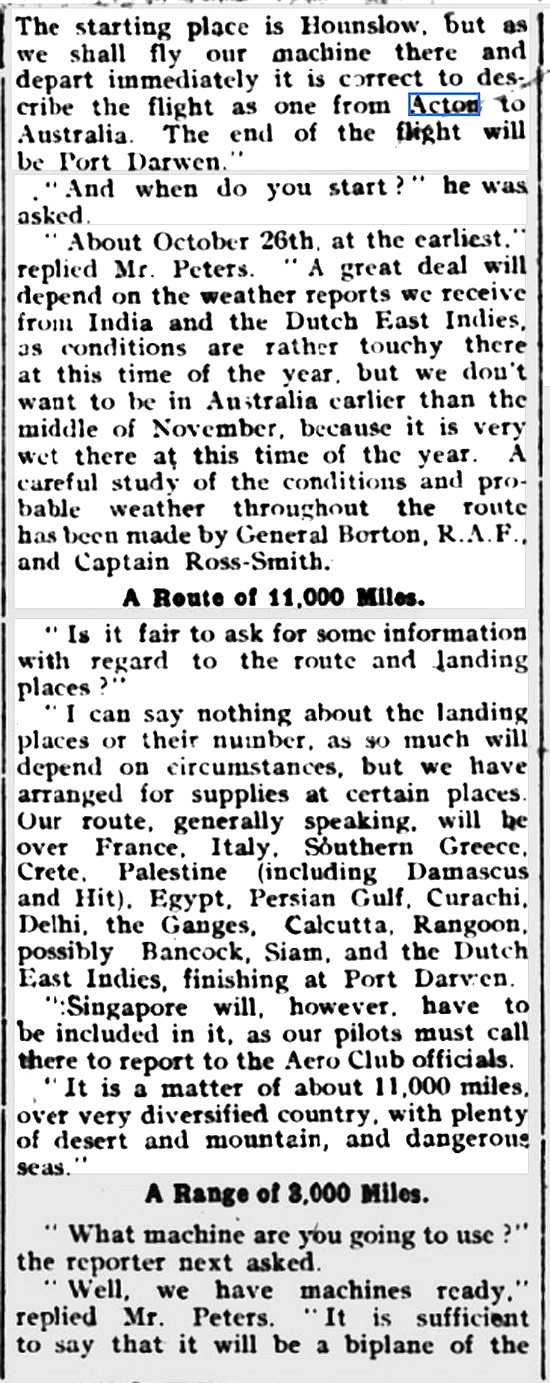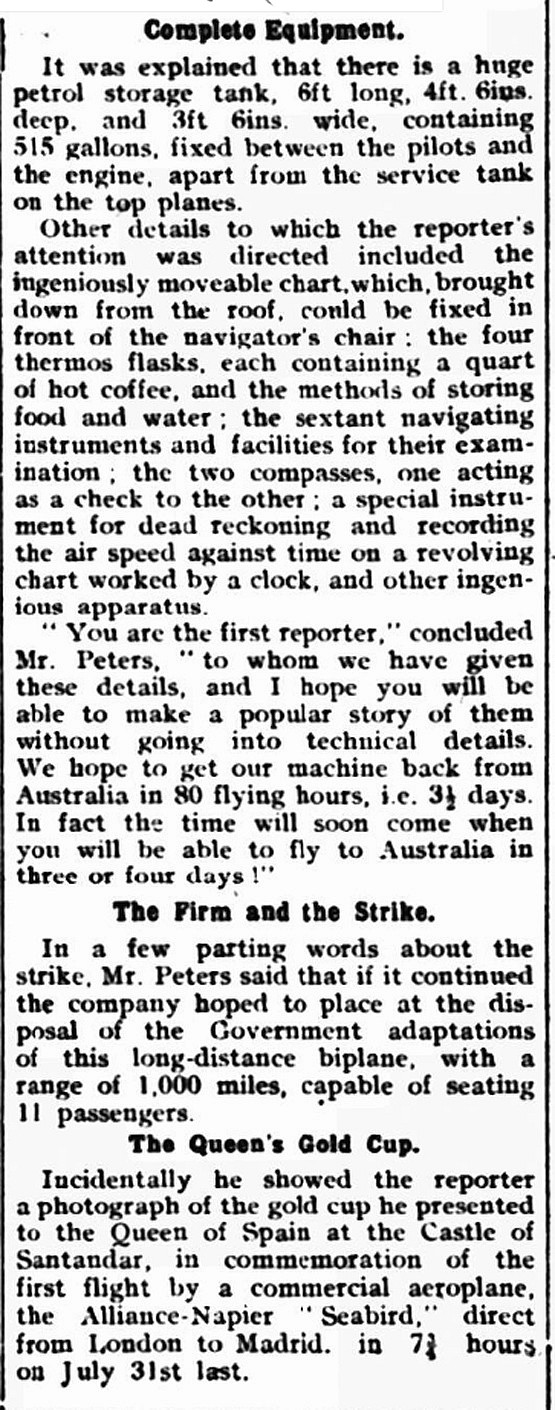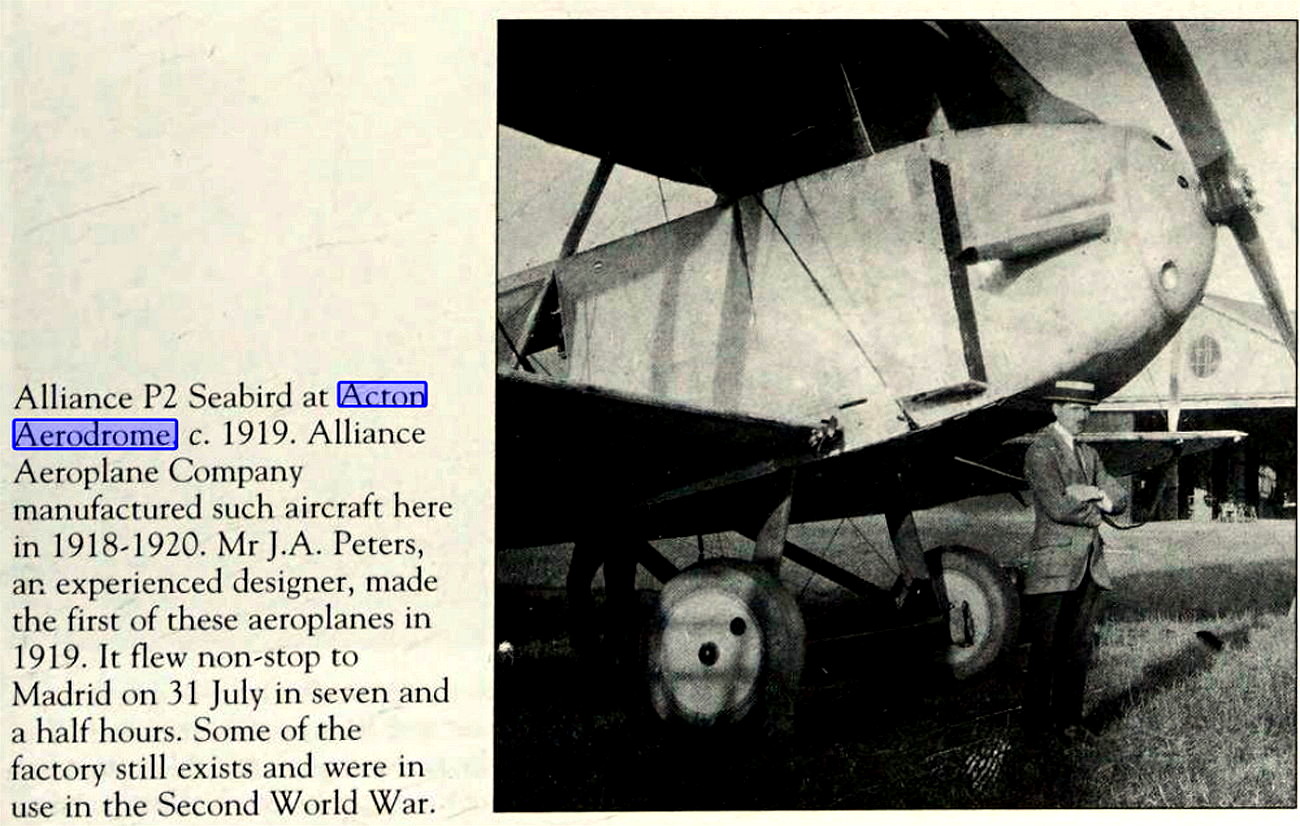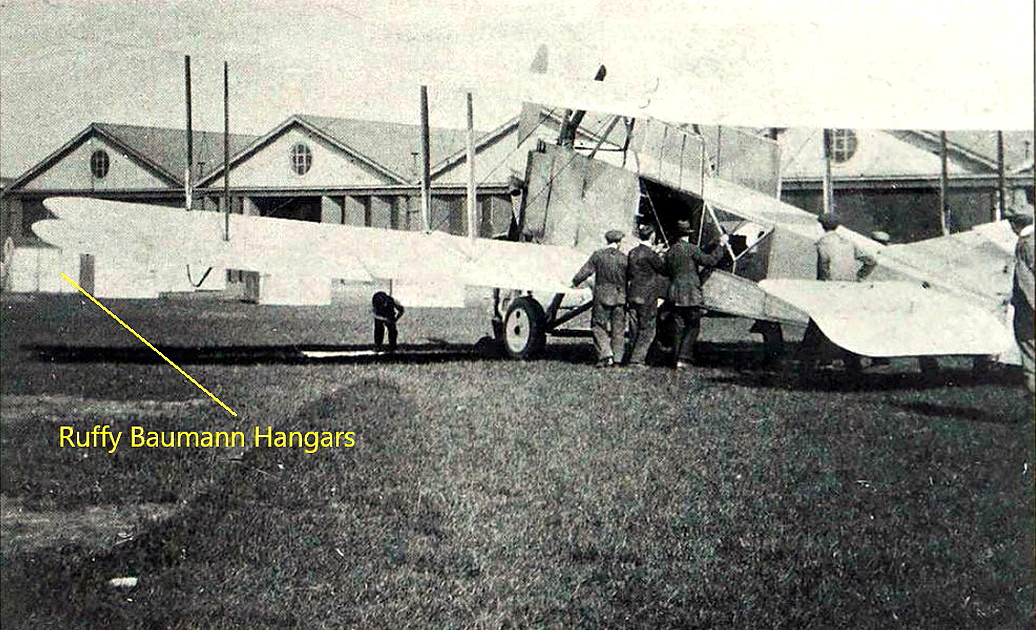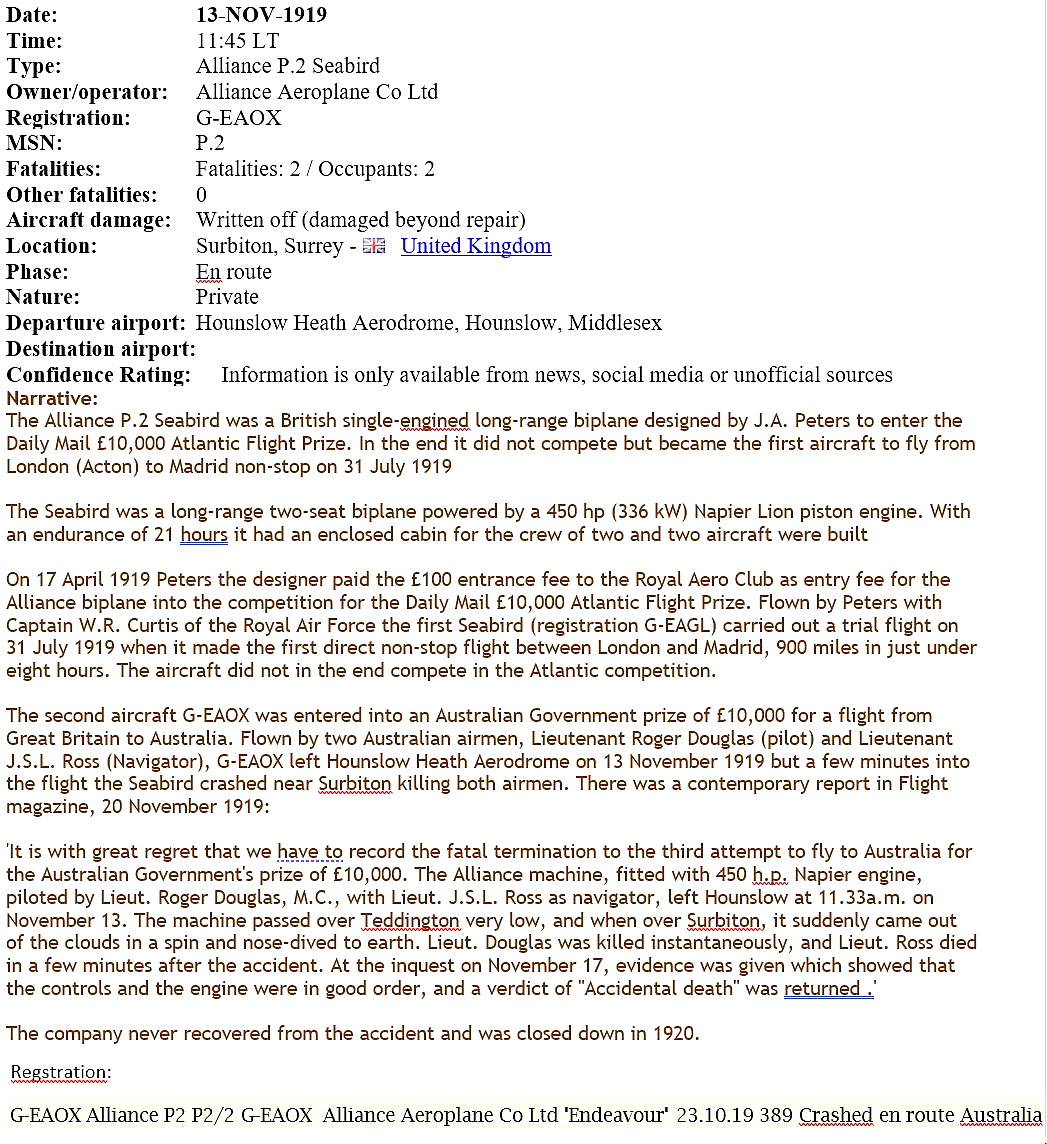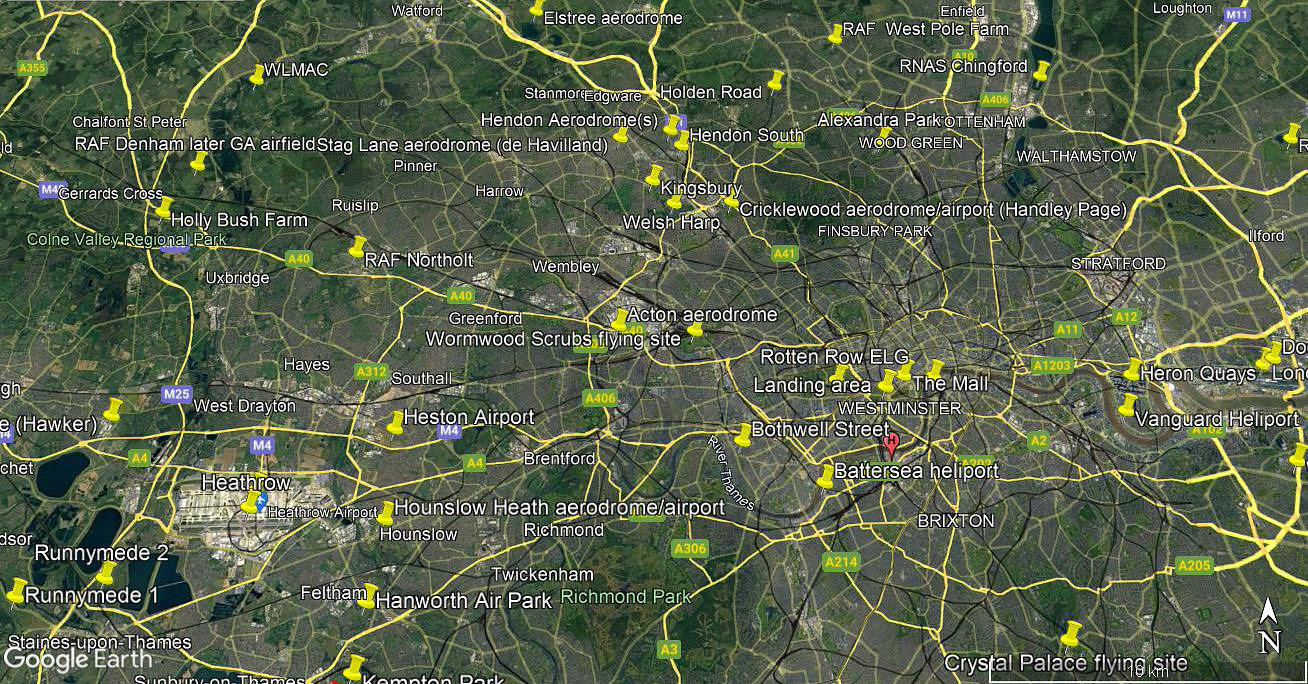Acton
ACTON: Civil aerodrome (Also known as THE LONDON AVIATION GROUND)
Note: The Black Island film studios occupy the southern part of the Alliance factory, and that is all that remains. Picture by the author.
Operated by: Civil to 1914. National Guard 1914-1918 some say. This seems now to be disregarded at it now appears they were employed simply to guard the aerodrome.
From 1917 to 1918 almost certainly operated by the Ruffy-Baumann School of Flying
1917 to 1918 certainly according to adverts published. The Alliance Aeroplane Company from 1918 to 1919
Flying School: 1917 to 1918: Ruffy-Baumann School of Flying who are said to have operated the aeodrome during this period
Manufacturing: 1917 to 1919: The Ruffy-Baumann Company, The Alliance Aeroplane Company
Location: In 21st century terms the aerodrome was S of the A.40 Western Avenue and Park Royal, 1nm roughly E of the A406 North Circular Road & ESE of the Hangar Lane gyratory traffic system. In an area now mostly if not entirely occupied by an industrial estate and cinema centre
When operating it was S of the Western Region railway line and Park Royal area, E of Masons Green Lane & Hanger Hill, and N of the Central Line tube railway line*
Period of operation: 1910 to 1920
Runways: ‘All over’ grass airfield
NOTES: There are a couple of generally regarded as ‘unreliable’ reports concerning some experimental flying activity before 1910 on this site but these are probably related to the flying tests conducted nearby by Mr H Pilfard. See NORTH EALING
There is a big and very important lesson I have learnt regarding this site. I have taken an interest in local history, even bought some books and maps, and have always thought I was a person very interested in nearly all aspects of aviation. We even have copies of old OS maps displayed in our home in Ealing to inform and amuse visitors. But, despite living and working for some thirty years in this area of West London I knew nothing at all of the existence of this aerodrome before starting research for this 'Guide'!
So, imagine my surprise finding an advert in the 1917 edition of Jane’s World Aircraft directory, stating that the Ruffy-Baumann Company stored, repaired, tested, brought and sold, designed and constructed aircraft plus running a flying school here and at HENDON. A couple of visits made to the main Ealing library soon filled in extra details, (they have a dedicated local history section), plus a lot of extra information regarding other important local historical flying sites and we really should applaud and appreciate the immense value local libraries serve when it comes to protecting and saving knowledge of our history. These facilities aren’t just there to lend out books and perform a sterling service in many other ways.
A BOMBSHELL DISCOVERY
What really was a surprise, which came about after regularly working for many years in the Black Island film studios in Alliance Road, was that this was originally part of the Alliance Aeroplane Company factory! So, whilst trying to figure out where the ACTON aerodrome really was when researching this Guide - I had actually been standing on it. What is more, for many years our major client in motion control had their facility nearby, and pretty much smack bang in the centre of the Acton aerodrome.
*In early 2013 a friend pointed me to a web-site of the Acton History Group. On looking at this it was obvious that several aspects of aviation history in this area needed to be amended for this Guide. For example they state: “A small airfield was set up in 1910 as “The London Aviation Ground” on a triangle of land now bounded by Masons Green Lane, Saxon Drive and the Western Avenue, Acton. Dixon and Long used this airfield on a regular basis. Four sheds 40ft x 80ft of wood and corrugated iron were built to house the aircraft. In May 1911, a fire took hold, destroying two of the sheds and five monoplanes. The local fire brigade were able to save two bi-planes. Undaunted by the setback, the airfield was enlarged, and twenty fireproof hangers established”.
However, and as per always, simple errors lead to me questioning the authenticity of the research. In this case, for example, “hangars” are spelt ‘hangers’. In those days hangars were called sheds. Indeed, even up to the 1930s many thought the French term ‘hangar’ (for shed) should not be adopted. It was of course, presumably because it obviously made sense to adopt the term to differentiate ‘sheds’ used solely to house and maintain aircraft. But of course, I have no reason to expect local historians to be conversant with aviation terminology. It now appears that the ambition to erect twenty hangars (sheds) was not fully realised.
THE ACTON HISTORY GROUP
The Acton History Group go on to say: “In 1913, flying displays were given by G T Lee and Claude Graham White”. (My note: Should be spelt Claude Grahame-White). It appears that “public flying”, whatever that might be exactly, continued until WW1 when, it seems, the site was taken over by the National Guard.
They also state: “The Ruffy, Arnell and Baumann Aviation Co. moved from Hendon to the Acton airfield in March 1917, and for two and a half years were busy training military pupils posted to the school using twelve small Caudron G2 tractor biplanes. Initially aircraft and pupils were housed in tents, but a brick hangar and workshop were constructed. Felix Ruffy was Italian, the Baumann brothers were Swiss, and the instructors were of many nationalities. Training ceased in 1918, when the Air Command gave notice of closure because the training and facilities were inadequate”. This indicates that the training regime lasted for one and a half years, not the “two and a half years” stated.
What isn’t explained, (and why should it be?), is that despite having contracts to provide initial flying training for RFC pilots awarded by the Director of Air Organisation in 1916, the Ruffy-Baumann School, along with all the other schools at HENDON with DAO contracts were issued with orders to quit HENDON in early 1917. The whole situation now seems utterly bizarre but a recent study indicates that the majority of people holding senior positions in both the civil service, Government and the military would now be, given a modern IQ test, in the ‘Moron’ classification. If correct this seems to explain a hell of a lot regarding those times.
A MICHAEL T HOLDER GALLERY
Mike Holder, a great friend of this 'Guide', has very kindly provided these items, which certainly adds to our appreciation of this little known aerodrome.
Note: The short article in Flight magazine was published on the 25th October 1913.
Note: The photo of the Alliance Atlantic, taken in around 1919, could possibly be G-EAGL? It certainly bears a considerable resemblance to the Alliance P.2 Seabird, G-EAOX.
Note: The newspaper article, concerning the flight to Madrid by G-EAGL, was published in the Aberdeen Press and Journal on the 20th August 1919. The picture with the works team was published in the Acton Gazette on the 3rd October 1919.
Note: This article, split into four parts to make it easier to read, was published in the Acton Gazette on the 3rd October 1919.
Note: The accident report concerns the fatal accident when G-EAOX departed from HOUNSLOW to Australia. The local area view is from my Google Earth © derived database.
RUFFY-BAUMANN MANUFACTURING AND ALLIANCE
The report goes on to say: “In 1917, Ruffy-Baumann began to develop aircraft. The advanced trainer was a single seat bi-plane with a 60 h.p. Anzain engine (my note: this should read Anzani) and the two seater had a 70 h.p. Renault engine, which was later to become the Alliance P1. They were taken over in the summer of 1918 by the Alliance Aeroplane Company formed by the furniture makers Waring and Gillow who were already making tents at the White City, and aircraft at Cambridge Grove Hammersmith”. It now appears that an arrangement was made between Waring and Gillow and the Nieuport & General Aircraft Company – which would help explain the name ‘Alliance’.
“To satisfy the need for aircraft for the war, a substantial “Aircraft Erection Shed” was built on the site which is now just south of the Western Avenue. The massive roof struts, each weighing 20 tons, gave the factory a clear space of 200ft x 153 ft”. Presumably this would have been the final assembly area (?) now used, but subdivided into film studios? The actual building complex was much larger. This said an ‘open’ or unsupported covered space of these dimensions would surely have been amongst the largest of any factory anywhere in Britain?
The report also states: “The facility was used to construct the De Havilland DH9 and DH10 Aircraft, but the conclusion of the war reduced demand for their products”. Here again the ‘Acton Group’ report is somewhat misleading. The DH.9 was, in those days, the Airco DH.9. The ‘DH’ denoting that it was a de Havilland design. Geoffrey de Havilland had been working for the Royal Aircraft Factory at FARNBOROUGH earlier in WW1 but had left to join Airco. He set up his company at STAG LANE aerodrome (west of Burnt Oak in NW London) in late 1920 after Airco was sold to BSA (Birmingham Small Arms). As a consequence the Airco DH.9 became known, after 1920, as the de Havilland DH.9. The DH10 was also an Airco design by de Havilland. Also, another report says that Handley Page aircraft were also built here on a sub-contract basis.
THE ALLIANCE P2 SEABIRD
To continue: “Alliance decided to produce civil aircraft, and J A Peters designed the Alliance P2 Seabird, a long distance aeroplane powered by a locally made Napier 450 h.p. “Lion” engine”. Two examples were built, with small differences, G-EAGL and G-EAOX. “Piloted by Peters, this aircraft won the Acton to Madrid Air Race in 1919”. Without too much doubt, there was no such race? It now appears probable that Peters decided to make a non-stop record-breaking flight to Madrid, in G-EAGL, on the 31st July 1919, in order to establish the type as a contender for the Daily Mail £10,000 ‘Atlantic Flight Prize’.
I hope you might be interested to read these notes made several years ago whilst attempting to research our aviation history. For example I soon learnt that some sources state that the Alliance P.2 Seabird G-EAGL took off from here for an Atlantic flight attempt in July 1919 flying non-stop to Madrid and the attempt was cancelled whilst the aircraft was in Spain. This is almost certainly untrue and probably very badly researched hogwash which is sadly so typical of many books claiming to give accurate accounts of our aviation history. The Madrid flight did take-off from ACTON and was actually a long distance proving flight conducted by the designer J A Peters as pilot in 7.5 hours and was entirely successful.’
So far, so good? It now appears that the, “The Atlantic crossing attempt using this later modified aircraft, (named Endeavour?), took of from HOUNSLOW AIRPORT with a different crew and quite soon after take-off, (probably as a result of entering cloud?), crashed with fatal results in Surbiton, SURREY”. G-EAOX was taking part in the UK to Australia race. See HOUNSLOW AIRPORT for more info.
The report ends: “This failure took the heart out of the company, and it closed in early 1920, when the last recorded flight of a Nieuport London aircraft took place”. This aircraft was a night-bomber powered by two ABC ‘Dragonfly’ 19 cylinder radial engines. A report says it was: “…dogged by unavailability and unreliability of its engines”. It was designed by Henry Folland, who went on to greater things later on, but, despite an order to six, only two were built.
A BIT MORE HISTORY OF THIS SITE
On another somewhat oblique angle, the vehicle making industry has had a long association with the aircraft industry. Indeed, in WW2, without Austin and Morris, to name just two, getting involved in producing aircraft, and without much doubt – the war would have been lost, well before the USA decided to join in. The Alliance factory was taken over by Renault in 1925 and they built another factory alongside, this latter site still being a major Renault car and van dealership. Also the Napier factory, (Napier Motor Works) which moved to Acton from Lambeth in 1903, was involved in vehicle and engine production. It appears that from 1914 they became involved in designing and producing aero engines, the Napier ‘Lion’ probably being their best early design?
After WW2 the company also engaged in designing and building ‘gas turbine’ engines for aircraft, possibly the best known being the ‘Gazelle’ and ‘Eland’. The 6.5 acre Napier factory, which was situated on and S of Acton Vale, was sited roughly 1.5nm SE of ACTON aerodrome.
What I certainly had not realised was that the Acton –Park Royal area was known, in the 1920s, as “Motor Town”. In 1932 the motor industry employed 5,400 people, some 80% of the workers in the district. These activities included both vehicle and/or component manufacture. Perhaps ironically (considering the involvement of the UK during WW1 and WW2 to support France), only the French manufacturing company name ‘Renault’ still exists as a major trading entity, now on a global scale of course – and still having a major presence in the Acton area.
IN CLOSING
In closing it appears the ‘Alliance factory’ was involved, during WW2 in producing Avro Anson fuselages and wings for the DH Mosquito. And, in Acton cemetery a memorial still stands in memory of George Lee Temple, the first British airman to fly ‘upside down’ in the UK. The first exhibition of ‘upside-down’ flying in the UK being performed by the French aviator M Pegoud at BROOKLANDS (SURREY). See HENDON for more info on George Lee Temple.
Robert Burrell
This comment was written on: 2017-02-25 10:35:19Whilst working in Acton Library in the 1960's, I was the first to discover the exact location of Acton Aerodrome. Nothing on OS and other maps until we were donated an early AA Handbook, and there it was! By the way, I recall Noel Pemberton-Billing (the MP) flew from the Aerodrome too.
Reply from Dick Flute:
Hi Robert, Many thanks. I expect you were quite amused to see how much trouble I once had - some half a century later! Best regards, Dick
Harvey Richardson
This comment was written on: 2018-07-29 16:24:17My father, Leslie Roy Richardson, left John Lyon Schoo in April 1918, aged 16 to work as a draughtsman in 'an aeroplane factory' The school magazine writes: "Richardson, our prize draughtsman, left last term to enter an office at an aeroplane factory. We hope he likes his new position, as he has chosen a career for which he has the most distinct of bents". Is it possible he could have worked at Acton, and if so are there any records or archives which might confirm his time there?
Reply from Dick Flute:
Hi Harvey, It is entirely possible he may well have worked at Acton aerodrome as the Alliance company was still in business. On the other hand he may have gone the Napier as they had premises also in Acton. I think your best bet is to contact the library to see what options are available. Best regards, Dick
Stephanie Stanley
This comment was written on: 2018-12-12 20:23:50Very interesting having lived in Ealing all my life I had no idea that there had been an Aerodrome in Acton until I saw a picture and map whilst working at Black Island Studios
Reply from Dick Flute:
Hi Stephanie, Like you, until starting this research some twenty years ago I had no idea about Acton aerodrome. And it was some time later, having worked in Black Island Studios for many years, that I discovered it was once part of the Alliance Aircraft factory. I like to think, having spent some time discussing the history with Steve, then running Black Island, that this could have helped prompt him to put the boards up, detailing the history. And, quite probably, we might well have brushed by each other. Best regards, Dick
We'd love to hear from you, so please scroll down to leave a comment!
Leave a comment ...
Copyright (c) UK Airfield Guide















